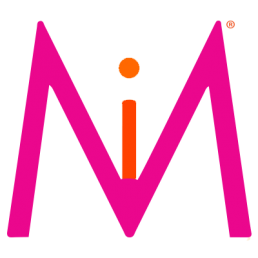
In a B2B environment, keeping your clients happy should be your top priority. During these challenging times, how can you ensure you are meeting your clients’ needs? While we may not be able to engage in face-to-face interactions, here are four tips and tools your business can implement today to communicate more effectively with your clients!
1. Understanding the Importance of Medium
Understanding the importance of which medium to use is often the first challenge. While technology has certainly made our lives easier, there is often pressure to over-utilize it. Blocking off a 30-minute session may not always be the most efficient use of time for you or your clients. Some thought should be given as to whether there is enough value derived from scheduling a video call for a specific problem or discussion. Before scheduling a video meeting, here are three useful guidelines: have a goal, list attendees, and follow an agenda. Having a goal provides clarity and something to progress towards before, during, and after the meeting. Listing attendees eliminates any assumptions in regards to who will be participating in the meeting. In some situations, not every team member may need to attend. Lastly, working from a specific agenda keeps the meeting organized and allows attendees to prepare questions and material ahead of time. These initiatives can be organized by a key decision-maker whose goal would be to ensure that meetings run according to the agenda and allow for a balanced discussion between all stakeholders.
2. Prioritize Meetings
Prioritizing and scheduling a weekly meeting using the three guidelines listed above allows organizations to both plan and continually make progress towards their shared goals. In addition to a standing weekly meeting, your teams can utilize various other tools to allow for inter-organizational communication outside of the video calls. Depending on the scope of a project and personal preference, tools such as Google Drive can supplement basic forms of communication such as chat, text, and email.
3. Project Management Software
Project management software is a good investment for companies to ensure they are meeting clients’ needs. Project management software saves the average employee 498 hours per year. The software will help organize task lists based on each of the clients, so it will ensure the team does not work on the same tasks and that everyone is on the same page. 80% of employees spend half of their workweek on “rework” caused by poor miscommunication. Therefore, the software will lay out the schedule of all the meetings and agendas with the clients. It will allow the company to see where the progress is on each of the projects, so they can quickly and accurately communicate the status to their clients in meetings. 61% of companies using project management tools complete their project on time. Overall, the project management software will allow the business to effectively communicate with the clients while simultaneously preventing confusion and giving clear updates. Some of the more popular project management tools are Asana, Wrike, Monday.com, and Basecamp.
(source: saaslist)
4. Curate Content
Make sure to curate content to appeal to your different types of clients. One size does not fit all. 76% of marketers share curated content on social media, the single biggest platform for distributing curated content. It is important to cater your social media engagement and online presence to connect with and attract potential clients to your business. The best way to collect information on curating content is listening. An example would be curating the SEO topic. You would have to examine the sites and blogs of the people active on there and use the two starting tools, which are RSS and Twitter. RSS would track their own content production about the SEO topic and Twitter would track the content related to the SEO industry they share. Be intentional about the platforms you use and how to use them. Different platforms can reach different audiences, so it is best to create content appropriate for each platform. For example, a longer post may be better served on LinkedIn or Facebook, whereas a short anecdote may be better served over Twitter or Instagram.
While each of these suggestions are helpful on their own, they work best in collaboration to increase time management, consistency, efficiency, and productivity for you and your clients.

